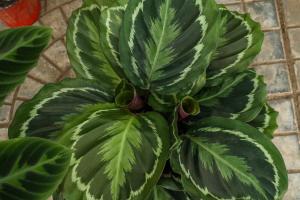Introduction
Drip irrigation is a great method for watering potted plants. It ensures that the water goes directly to the roots of the plants and not on the leaves, which can lead to mildew and other diseases. In this article, we will discuss step by step how to set up drip irrigation for potted plants.
Materials Needed
Before starting, gather all the materials required. The list includes a drip irrigation kit, timer, scissors, and a sharp knife. You should also have a bucket to hold the kit and any other supplies you may need.
Installing the Drip Irrigation Kit
To install the drip irrigation kit, first, take your potted plants and place them in a location where they can all be easily reached. Next, open your kit and attach the main line to the spigot. Once this is complete, lay the tubing on the ground, around your pots, or use stakes to secure it above ground. Connect the emitters at the base of each plant by punching holes in the tubing where you want water to come out. These holes can be made using a sharp knife or scissors. Then, attach a T-connector to the main line, which will connect the tubing to the timer. Finally, read the instructions for the timer to ensure it’s set up properly.
Setting up the Timer
Your timer should be connected to your drip irrigation system using a T-connector. Follow the instructions provided in the kit to connect the timer to the main line. Once the timer is connected, it needs to be set up with the correct time and watering schedules. Most drip irrigation timers have an LCD display and are programmed using a push-button keypad. Some models may require downloading an app or connecting to a Wi-Fi network to program.
Adjusting the Water Pressure
For the drip irrigation to work effectively, the water pressure needs to be set correctly. Excessive water pressure can cause emitters to malfunction, leading to plants not receiving water, and low pressure will impact the performance of the system. Check the instructions that came with your kit for the recommended water pressure or ask a professional for advice.
Troubleshooting
If you notice any issues with your drip irrigation system, troubleshoot before resorting to replacing any parts. Common problems include emitters and tubing becoming clogged, pressure fluctuations, or the timer malfunctioning. For blockages, clean out the emitters and tubing using a small brush, while for low pressure, check that there are no kinks in the tubing or leaks at connections.
Conclusion
Setting up drip irrigation for potted plants may seem intimidating, but it is an easy process that does not require any specialized skills. By ensuring that your plants receive consistent and right amounts of water, you will be able to help them stay healthy and thriving throughout the growing season. Invest in drip irrigation today!

 how many times do yo...
how many times do yo... how many planted tre...
how many planted tre... how many pine trees ...
how many pine trees ... how many pecan trees...
how many pecan trees... how many plants comp...
how many plants comp... how many plants can ...
how many plants can ... how many plants and ...
how many plants and ... how many pepper plan...
how many pepper plan...































